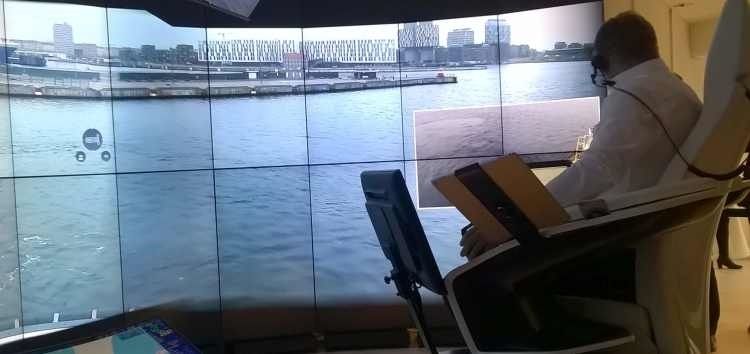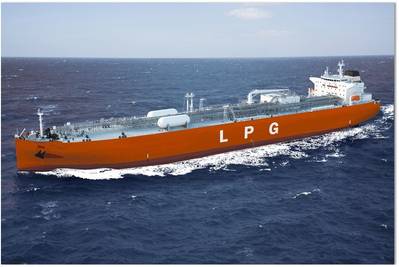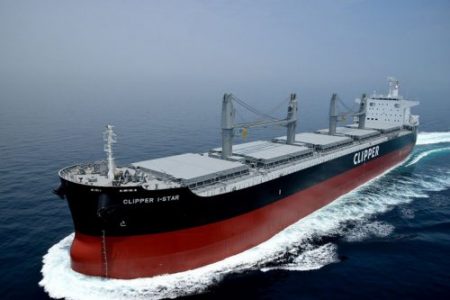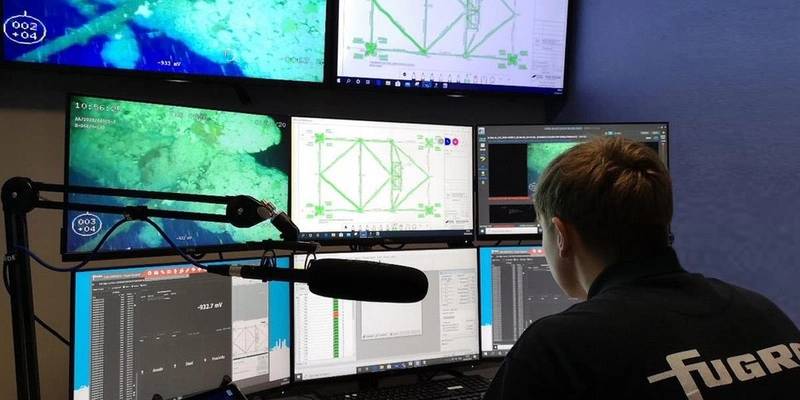
Subsea: The Future of Unmanned Vehicles
06/03/2019
IMO takes the e-navigation reins
11/03/2019Ten technologies to shake up maritime in 2018


Technologies that could shake the maritime industry can come from all angles. But the biggest hitters this year will be those that change the face of IT and digitalisation in the industry. Shipowners will already be well aware of the changing face of ship emissions and smarter fleet management, but are they aware that developments in robotics, digital currencies and deep learning computers are also set to impact on their operations?
As in 2017, there will be advances in multiple computer-based technologies but there will be some curveballs that will change the nature of maritime operations and the business of shipping. Greater levels of automation and digitalisation of processes will have an impact on daily operations. Here we consider the top 10 technologies that could, or should, bring positive influences and operational benefits to shipping.
Deep learning

Computers are getting smarter and IT giants, such as Amazon and Google, are using deeper levels of machine learning to understand their sectors better. These companies are becoming more interested in shipping and transferring their technologies to the sector.
Amazon is building graphical processing units using deep learning and Microsoft is using field programmable gate arrays. Google is developing neural networks and machine learning on tensor processing units, which are application-specific integrated circuits.
These technologies enable the corporations to learn more about their customers and develop advanced data centres. Maritime organisations could use these technologies in the new generation of operations hubs that are beginning to emerge, such as the one opened by Thome Group in Singapore near the end of 2017, and those being developed by classification societies and onboard system suppliers ABB, Wärtsilä and Rolls-Royce.
Artificial intelligence

Global IT technology is at a stage where computers and automation systems are becoming more intelligent. This takes machine learning into different directions and applications that will enable autonomous surface vessels to navigate without human interaction. Intelligence is required for vessel computers to understand the environment and maritime conditions they encounter.
Algorithms can provide onboard computers with methods of solving problems that are typically encountered and can be predicted. But what about those that cannot be forecast? For those, artificial intelligence will be required. There are other applications in maritime security as this intelligence can be used in image, video, and audio recognition.
Industrial IoT
Internet of things (IoT) is making inroads into shipping with liner operators particularly interested in using this technology for container tracking and reefer monitoring. Maersk Group is a leader in this, but others such as SM Line are catching up.
There are more varied applications of IoT. This technology is increasingly being used for monitoring onboard machinery for performance management and predictive maintenance purposes. Continued development of IoT technology using deep learning computers and high-volume data analytics on shore will deliver greater benefits for shipowners in 2018.
Autonomous surface vessels

2018 will be the year that autonomous surface vessels will be demonstrated and trialled. There were developments in 2017 in demonstrating remotely controlled vessels but this year, there will be vessels built for testing the boundaries of autonomous operations.
Larger autonomous vessels will be tested, illustrating how unmanned commercial craft could be developed. Construction on the world’s first autonomous commercial ship will begin and shipowners will be testing the market to identify which technology to adopt and where to consider building a future generation of unmanned ships.
However, conservative views will hold back investment and the major question of how unmanned vessels will cope with congested waters will remain unanswered. This is why a report* by the Institute of Electronics and Electrical Engineers highlighted assisted transportation as a more-realistic 2018 technology trend. It would use technology developed for autonomous vessels to provide greater assistance to onboard crew in their operations.
Blockchain
This process technology will revolutionise supply chain logistics and cargo trade over maritime routes. It is enabled by growth in digital currencies as methods of procuring products and trading cargo. This will develop from a fledgling industry process towards a mainstream method of transacting in maritime and global supply chains.
IT heavyweights are entering the market and consolidating their products, based around an expansion in the number of digital currencies in circulation. The main ones, known as Bitcoin and Ethereum, will be joined by newcomers Litecoin, Dash, and Ripple and will become commonly-traded currencies.
There will be growing recognition that blockchain processes can improve cyber security in maritime transactions, even with future developments in cloud computing and machine learning. Blockchain and digital currencies enable secure computer-to-computer transactions that may minimise the intervention of humans in these processes.
Augmented reality

AR is being developed for maritime applications and has been demonstrated on ship bridges and remote operating centres to deliver different levels of information to end-users. Rolls-Royce is using AR technology in its remote operating centre demonstrator in Copenhagen, Denmark. The first AR application on a commercial ship is likely to come in 2018.
Virtual reality
VR and gamification processes are creeping into training technology and shipping can expect the first commercial program to be available in 2018. VR and AR can also be used for ship design and engineering processes by evaluating ship interiors, piping requirements, electrical networks and personnel movements in emergencies. VR is likely to be introduced on cruise ships for passenger entertainment and for demonstrating what should happen in emergencies. It may also transfer to offshore vessels and commercial shipping for similar purposes.
Drones

Classification societies are developing methods of using flying autonomous craft, or drones, to assist surveyors on ships. Drone technology already exists and commercial units are ready for use, but they need to be hardened for maritime applications. Drones can provide information to surveyors from difficult-to-reach areas on ships and offshore structures. Commercial drone-based surveys will be adopted in 2018.
Another application for drones is testing ship emissions. There are commercial units available and being tested for these applications. Drones can also be used for delivering parcels to ships close to coastlines and navigating in ice conditions to provide more information to masters. In 2018 we can expect more development in each of these applications and ships being equipped with their own drones.
Robotics
Even though robotics research has been performed for many decades, robotics adoption has not flourished in maritime. However, with increasing interest in developing autonomous vessels, there will be greater need for robotics. Taking humans off ships not only leads to navigational issues, but also adds challenges to maintenance and other manual operations, such as line handling. Perhaps robots can be built to perform these operations with remote control assistance.
Cyborg crew
Developments in wearable technology has developed methods for people to monitor their own health and performance, such as heart rate, accumulated steps or sugar levels. This technology can be extended to provide this type of information to employers, something that shipmanagers should be interested in. Taking this technology a stage further could be the implantation of monitoring sensors to provide health and performance data in real-time.
These technologies will have major impacts on shipping in 2018 and will have prolonged ramifications for its future. Some are already well advanced, while others are still in early development. Almost all of these are already in use in other industries and just need a trigger for them to be adopted in maritime.




